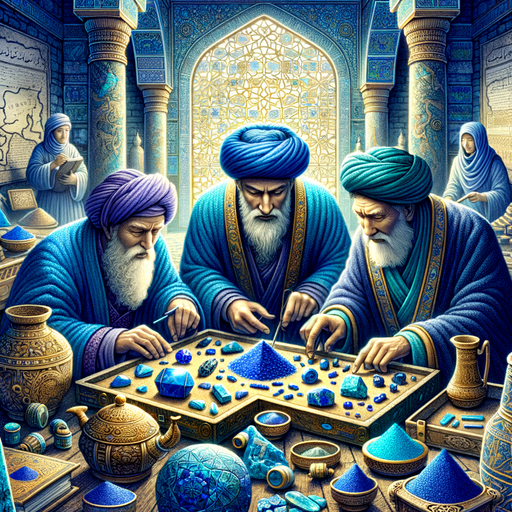The Timeless Allure of Lapis Lazuli
A captivating journey through history exploring the charm and uses of Lapis Lazuli from ancient times to the present day.

The Timeless Allure of Lapis Lazuli
Introduction
From the tombs of ancient Egyptian pharaohs to the canvases of some of the most revered Renaissance masters, a certain mesmerizing blue mineral has made its mark throughout the history of mankind. This gemstone, known as Lapis Lazuli, has been prized for thousands of years for its intense color and the allure it provides.
A Gemstone Steeped in History
Lapis Lazuli, often referred to simply as ‘lapis’, is a deep-blue metamorphic rock used as a semi-precious stone that has been prized since antiquity for its intense color. The finest specimens are mined in Afghanistan, but the stone can also be found in Chile, Russia, and other parts of the world.
The earliest known use of lapis lazuli dates back to the 7th millennium BCE, in the form of a bead discovered at a Neolithic burial site in Mehrgarh, present-day Pakistan. The stone’s popularity continued through the ages, with notable use in Ancient Egypt.
In Ancient Egypt, lapis was a symbol of royalty and honor, gods and power, spirit, and vision. It was a universal symbol of wisdom and truth. From scarabs to masks to jewelry, lapis lazuli was a staple in the aesthetic of this ancient civilization.
The Renaissance and Beyond
| Period | Use of Lapis Lazuli |
|---|---|
| Renaissance | Ground into powder to create ultramarine, the finest and most expensive blue pigment |
| Baroque | Continued use in artwork |
| 19th Century | Popular in jewelry and other decorative items |
| Present Day | Used in jewelry, decoration, and holistic healing |
“Blue color is everlastingly appointed by the deity to be a source of delight.” - John Ruskin
During the Renaissance, lapis lazuli began to be ground down and used to create ultramarine, the most expensive of all blue pigments. This precious pigment was used by some of the most important artists of the Renaissance and Baroque periods, including Vermeer and Titian.
In the 19th century, lapis was often used in jewelry and other decorative items. Its vibrant color and the unique, gold-like flecks of pyrite within the stone made lapis a sought-after gem for ornamental purposes.
Today, lapis lazuli is still used in jewelry and decoration, but it has also found a place in the realm of holistic healing. Some believe this stone can help to enhance intellectual ability, activate the higher mind, and stimulate the desire for knowledge.
Conclusion
From ancient beads to Renaissance paintings, from Victorian brooches to modern healing crystals, lapis lazuli has maintained its allure. Its rich history and vibrant color make it a gemstone that continues to captivate those who encounter it. Whether you’re a mineralogist, a history buff, or just someone who appreciates the beauty of the natural world, the lure of lapis lazuli is undeniable.
You can learn more about this fascinating gemstone and its history in this comprehensive study by the Gemological Institute of America.